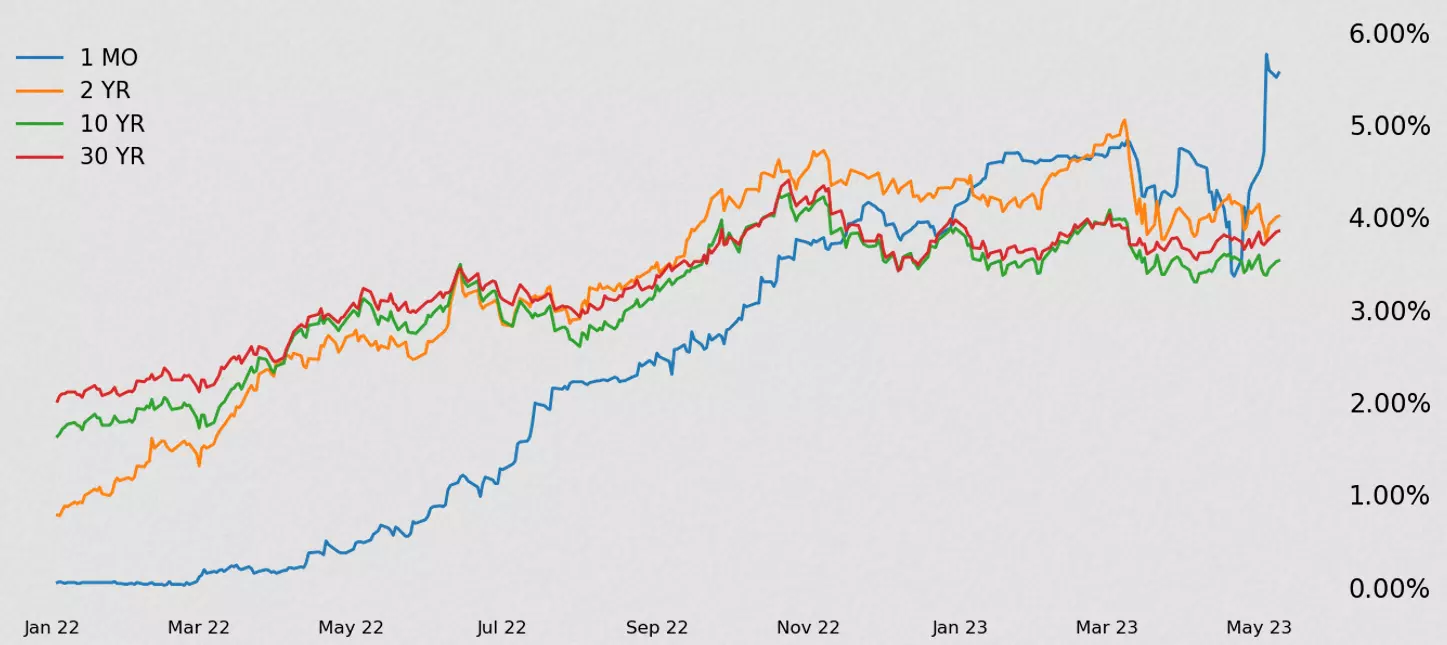What a US default could mean as debt ceiling looms

What is the debt ceiling?
The debt ceiling is the total amount of debt that the US Treasury is allowed to have outstanding at any given time, currently $31.4 trillion. The US Department of the Treasury defines its debt limit as, "the total amount of money that the United States government is authorized to borrow to meet its existing legal obligations, including Social Security and Medicare benefits, military salaries, interest on the national debt, tax refunds, and other payments."
When would the US default?
Treasury Secretary Janet Yellen reported that the US Treasury could run out of money to pay its financial obligations as soon as June 1st.

How would a default affect US dollars?
A default from the US Treasury would likely create less confidence in the US and even a credit rating downgrade for the Treasury's lofty status. Such an outcome could cause a dramatic decrease in demand for US dollars, which would result in USD depreciation against major currency counterparts like the euro (EUR) and Japanese yen (JPY).
How to trade US dollars
- Choose a forex market including USD
- Open an account to get started, or practice on a demo account
- Choose your forex trading platform
- Open, monitor, and close positionsTrading US dollar using forex markets requires an account with a forex provider like tastyfx. Many traders watch major forex pairs like EUR/USD, GBP/USD, or USD/JPY for potential US dollar opportunities. You can help develop your forex trading strategies using resources like tastyfx’s Learn Center. Once your strategy is developed, you can follow the above steps to opening an account and getting started trading forex
Your profit or loss is calculated according to your full position size. Leverage will magnify both your profits and losses. It’s important to manage your risks carefully as losses can exceed your deposit. Ensure you understand the risks and benefits associated with trading leveraged products before you start trading with them. Trade using money you’re comfortable losing.
*Data from US Dept of the Treasury
This information has been prepared by tastyfx, a trading name of tastyfx LLC. This material does not contain a record of our trading prices, or an offer of, or solicitation for, a transaction in any financial instrument. You should not treat any opinion expressed in this material as a specific inducement to make any investment or follow any strategy, but only as an expression of opinion. This material does not consider your investment objectives, financial situation or needs and is not intended as recommendations appropriate for you. No representation or warranty is given as to the accuracy or completeness of the above information. tastyfx accepts no responsibility for any use that may be made of these comments and for any consequences that result. See our Summary Conflicts Policy, available on our website.

